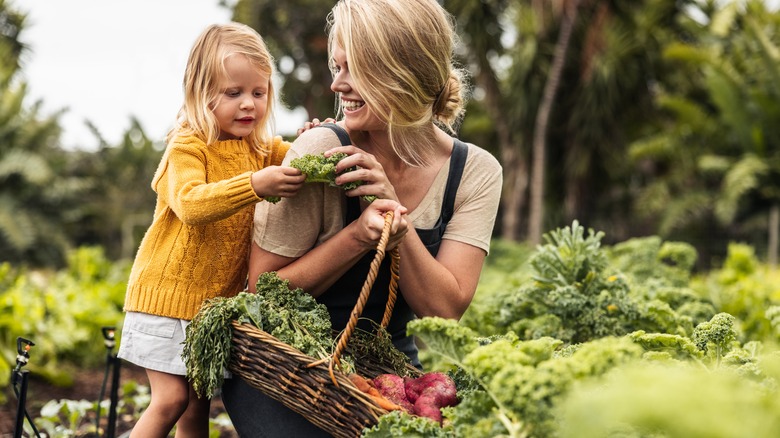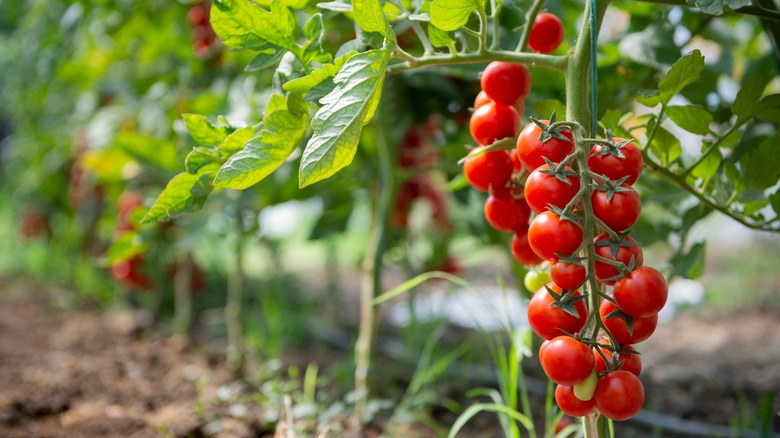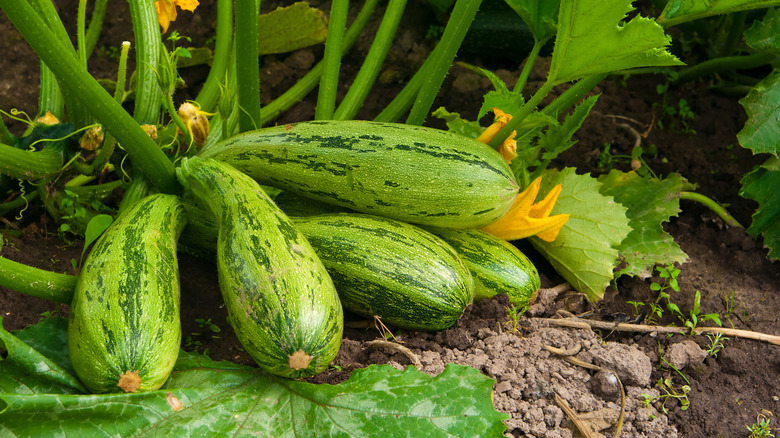The Most Cost-Effective Vegetables You Should Be Growing In Your Garden
Are you thinking about starting a garden this season? Growing your own produce will provide you with fresh and delicious vegetables, but there are more advantages than taste. You can save a lot of money by harvesting food from your garden rather than purchasing it from the grocery store. What you choose to grow will affect how cost-effective your garden is overall, so if you want to save as much money as possible, you'll want to start with the easiest and cheapest options like tomatoes, curly kale, potatoes, and zucchini.
While you will save money long-term, the upfront costs may make you doubt the process. The least expensive part of starting your garden is purchasing seeds, which is usually only a few dollars per packet. Another option is to start with a seedling from a garden center. That will cost more, but it'll take less time to start producing fruit. Then you'll need either a container for your plants or lumber to build a raised garden, tools, and nutrient-rich soil. When you start harvesting from these plants, though, you'll quickly realize that the upfront cost of seeds and supplies is well worth the amount of fresh food you'll have.
Tomatoes and curly kale
Tomatoes are common in backyard gardens because it's easy to care for them, and they produce so much food in one growing season. There are many different varieties, but heirloom cherry tomatoes are the most cost-effective. A packet of seeds is about $3, while a package of tomatoes at the grocery store is around $6 for a 24-ounce container. It only makes sense to save your money and grow them at home instead of continuously spending more at the store. Heirloom cherry tomatoes have a long growing season, so you can expect a large yield from those few initial dollars. Just ensure they're planted in an area with six or more hours of full sun daily, and water them about every other day.
Curly kale is another easy, cost-effective vegetable. It's a hardy plant that has two growing seasons throughout the year, so you'll get an even larger yield of food. You can start them in the spring for edible produce during the summer until it gets too hot. Then repeat the process in the fall for a winter harvest. A 12-ounce bag at the store is priced around $6 and will only give you two salads. Meanwhile, kale seeds are $3 or less. To care for curly kale, water plants about every week and set them in a space with more than six hours of full sun daily.
Potatoes and zucchini
Potatoes are often overlooked when deciding what to grow in a garden because they're cheap at the grocery store. However, they are a super straightforward food to produce in your backyard, so you really don't need to buy them. Plus, the savings keep adding up over time. Many people use seed potatoes, which cost $10 to $15. Another option is to use the spuds from the last bag you got from the store. Start by cutting them up so each piece has a sprout, or eye, on it. Then bury them under the soil. Potatoes do best with at least eight hours of full sun daily and like to be well-watered.
Planting zucchini can also save you lots of money; the seeds cost about $3 and one packet can give you 10 pounds of produce by the end of the growing season. A package of two zucchinis is $2 at the store, but you'll need to return and continue paying that price. Many people who grow summer squash end up with a humungous crop yield, so consider freezing some or sharing it with friends. Zucchini needs at least six hours of full sun and lots of water. The foliage is prone to disease, so make sure you water just the soil and not the leaves.


